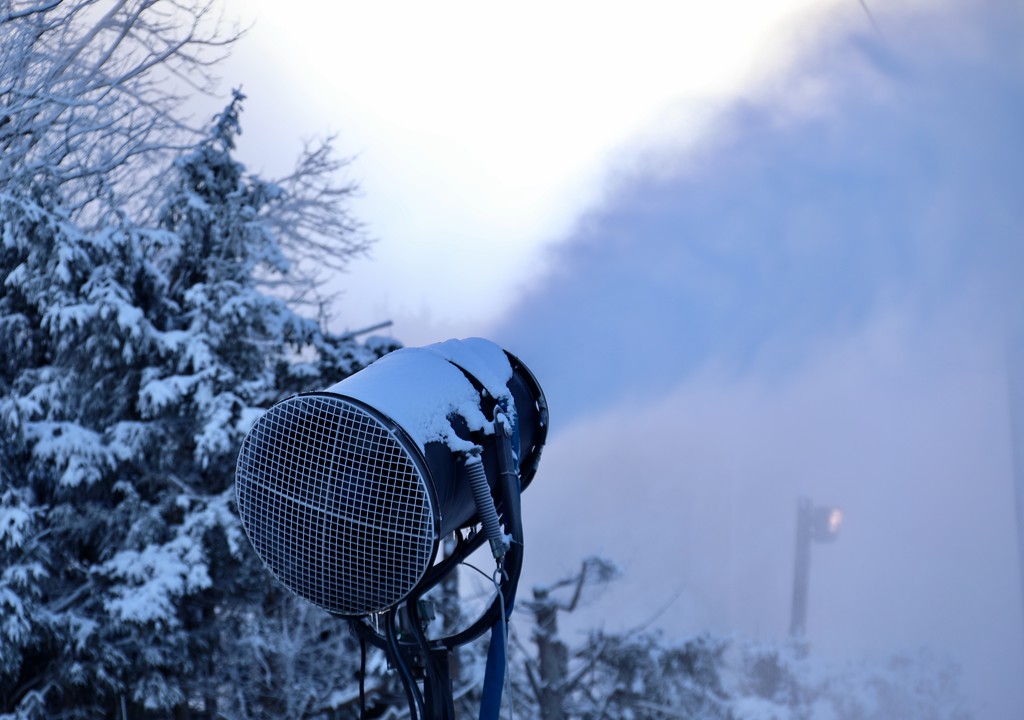You may have noticed that the cold temperatures returned last week with a vengeance! And with the cold comes one of our very favorite activities… making snow! Here is an inside look at the method behind the magic.
In Norse mythology, Ullr – a stepson of the mighty Thor – was a cold-loving skier and is often depicted wielding an archery bow. Many a prayer for powder has been offered up to him, and his skills on the snow translate well to the modern snowmaker.
And while the men and women today who make snow may fall shy of the deity status afforded their Nordic forbearer, what they do is no less fascinating. Mother Nature is prone to changing her mind often and is less than an ideal partner to run a business entirely reliant on the existence of snow.
Back in the 1940’s, Canadian researchers stumbled upon the modern snowmaking method while studying the ways in which ice forms on jet engines. Shooting water through a refrigerated wind tunnel and its’ resulting ice pellets ignited the imaginations of ski-loving engineers, and today the vast majority of ski resorts rely on snowmaking machines to supplement what nature provides.
As the oldest operating ski area in New York state, Mount Peter also serves as a microcosm of how snowmaking has evolved over the years. For one, the technology has become considerably more reliable. Mount Peter Mountain Operations Director Karl Kullberg, who has spent more than three decades on the job, recalls a very different time. “We spend less time fixing things throughout the night. I remember coming down in the morning to relieve the night shift, and asking ‘How many (snow) guns broke?’ And if the answer was none, it was like you died and went to heaven.”
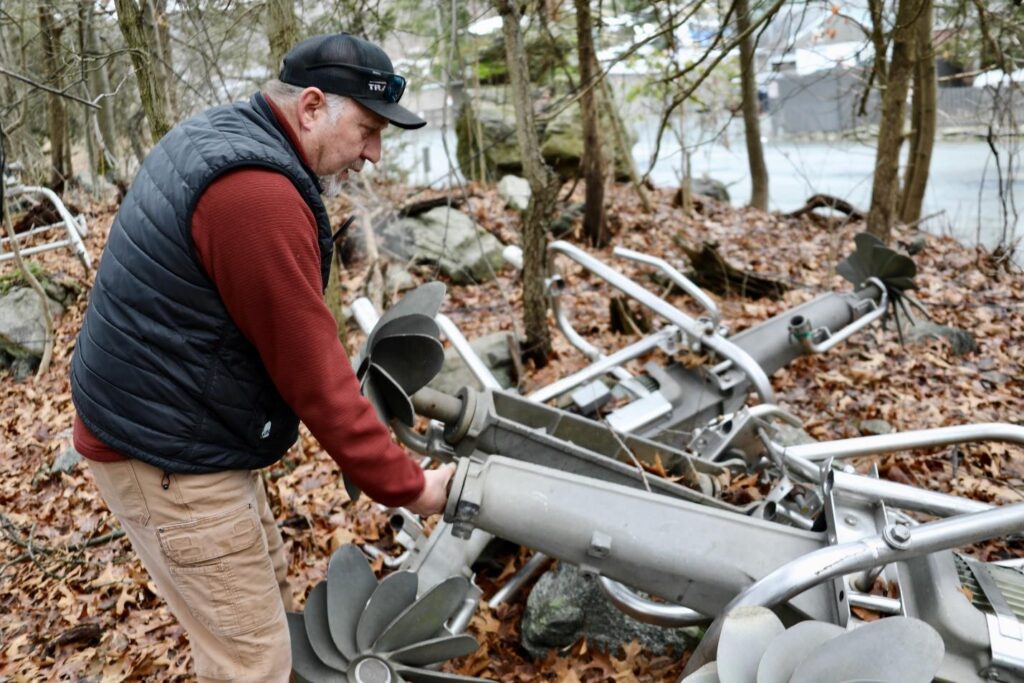
Mount Peter’s Karl Kullberg in the snowmaker’s “boneyard” of old snow guns
Today’s machines are also far more sophisticated than they once were. Which means running, maintaining, and troubleshooting them requires a level of expertise that can take years to acquire.
Tom Else supervises the daytime snowmaking team at Mount Peter and has just such a level of expertise – and some war stories that come with it.
“You probably need a minimum of about ten years of what we call ‘gun running’ to run a snowmaking crew,” Else says. Those snow guns are one of the most important weapons in a snowmaker’s arsenal, but like any sophisticated machinery, they require proper care and feeding.
“You want to run with the wind,” Else cautions. “You point a gun into the wind and your guns are going to be covered in ice and your fans are going to freeze up and you’re going to be out there with (blow)torches and it’s not going to be good… there’s always the potential for things to go south.”
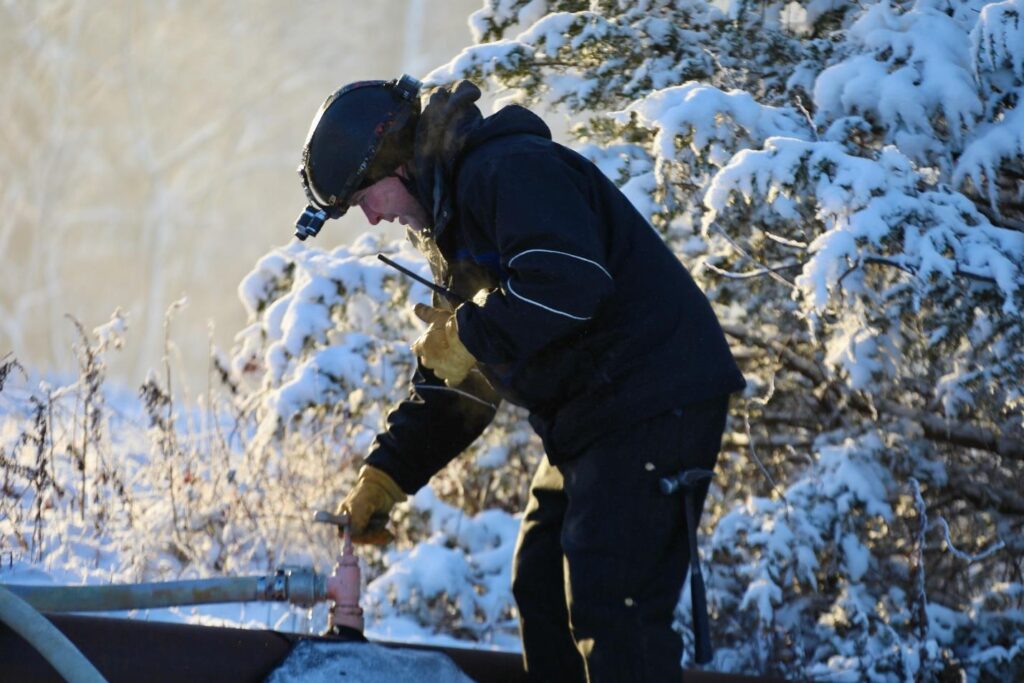
Shift supervisor Tom Else making his rounds at Mount Peter
One such episode led directly to Else’s first opportunity to run a snowmaking crew at another mountain:
“The whole crew that was there fell asleep one night, and all the wind changed, and they ruined an enormous snow gun with its own diesel engine on the back. The wind changed, buried it, and the thing just blew apart. They all got fired… and that’s how I became a snow-making supervisor.”
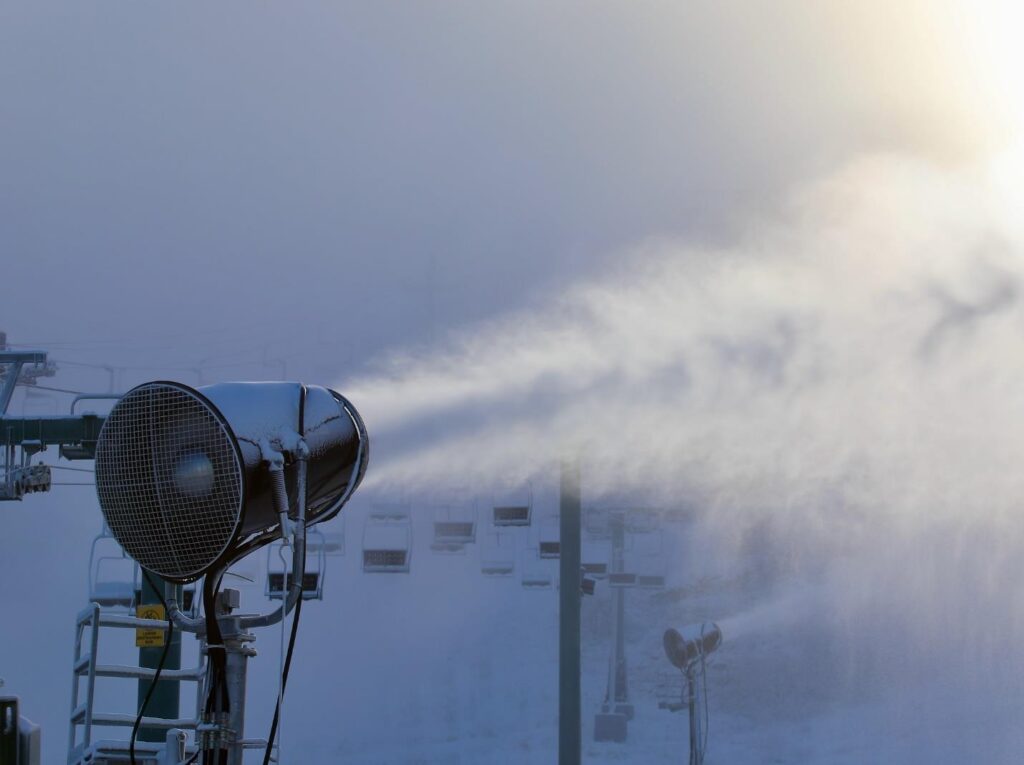
One of SMI’s dependable snowmaking fleet
Snow Machines Inc (SMI) is a Michigan based company and industry leader that has been making snowmaking equipment since 1974. Their first batch of machines were built in the garage of Jim and Betty VanderKelen. From such humble beginnings, SMI now services ski areas around the globe, and sees the increased use of automation as one of the industry’s game changers.
“We automate by using an onboard weather station that tells the snow gun when to adjust, and how much water should be flowing,” explains Brooke VanderKelen Alba, spokesperson and granddaughter of the company’s founders. “We also employ software that allows you to remotely control guns from your phone, tablet or computer.”
But as with most technological advances, the human element remains crucial. “You definitely need a human being to be monitoring the equipment,” advises VanderKelen Alba. “Someone to adjust for changing winds and other variables. Just because it’s automated doesn’t mean it’s unattended. Some of our customers will even use drones to help them monitor the equipment.”
The ethos at Mount Peter is very much informed by that crucial human element, and by its own history. Don and Gail Sampson made Mount Peter what it is today, and Kullberg shared his biggest takeaway from snowmaking with Don over the years. “There’s been times where I’ve looked up the hill and go: ‘He’s crazy. He is absolutely out of his mind.’ And around the clock, even throughout the night – just keep going. Just keep going. And guess what? We opened up that weekend. And that’s what I learned from Don.”
Snowmakers today cultivate a bit of the crazy too, but the technology hasn’t driven them there. It’s become much more user friendly. Modern snowmaking involves shooting tiny water droplets through multiple nozzles, which freeze instantly before combining with larger droplets blasted through still more nozzles. The process is called nucleation. “Every snowflake that falls from the sky forms on a piece of matter,” says Else. Whatever it is – pollen, dust – it has to cling to something and then start to crystallize. That was the basis of nucleation.”
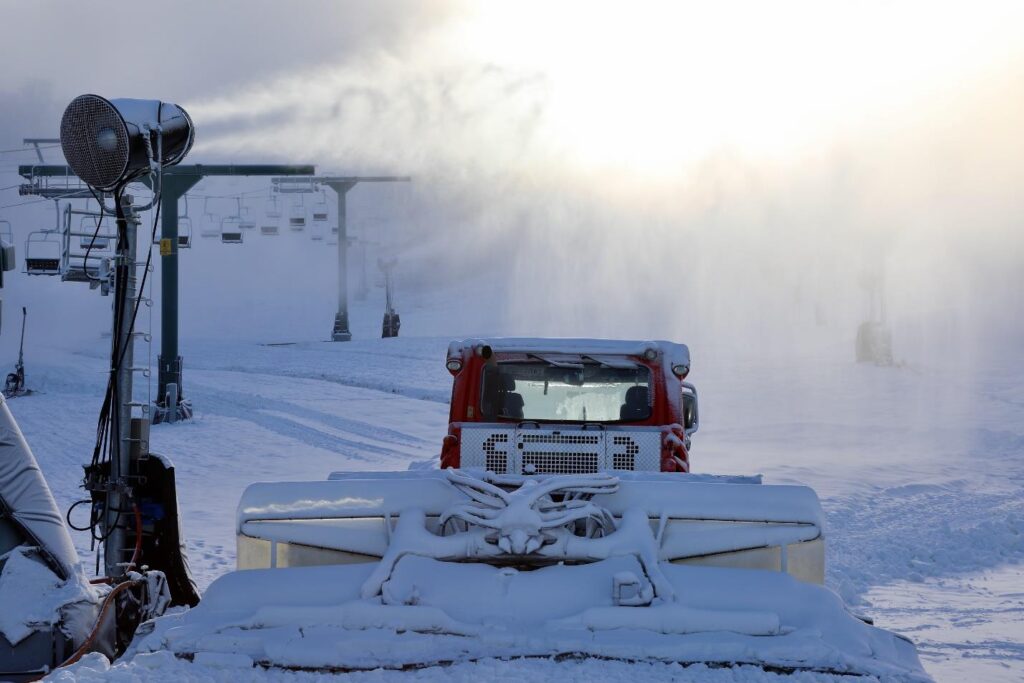
A snow groomer ready for deployment sits aside a snow gun
A powerful fan then projects the particles as much as 60 feet into the air. The guns oscillate, some with the ability to spread snow over an acre at a time. They’re also power mad; on average some two thirds of a ski area’s energy costs are devoted to snowmaking. “The vast majority of ski-making resorts today have some sort of supplemental snowmaking,” VanderKelen Alba says.
Truth be told, the entire process is technically not snowmaking. “We don’t make snowflakes. We make sleet is what we do,” Else says. The distinction is key to the abilities of ski areas to groom and maintain their mountains. “Think about it,” Else says, “a snowflake lands on your hand. It melts right away. It’s a very fine, delicate thing. A chunk of sleet hits your hand and it will sit there for a long time. We need something that we can push around and plow, run a tiller over and smooth out.”
With the stubborn and very un-winterlike weather patterns seen this season in much of the northeast, the snowmaking ability of those ski areas – and the agility of their snowmaking teams, have become even more crucial. Without them, the skiing, snowboarding and snow tubing enjoyed by millions across the country would be in serious peril.
Says Kullberg: “I just think we care, you know? We’re out there all the time.”
John Baiata
John Baiata is the Director of Marketing at Mount Peter. Baiata is a former journalist and two time Emmy Award winner who makes his home in Bergen County, New Jersey. More of his work can be found at funbusproductions.com

